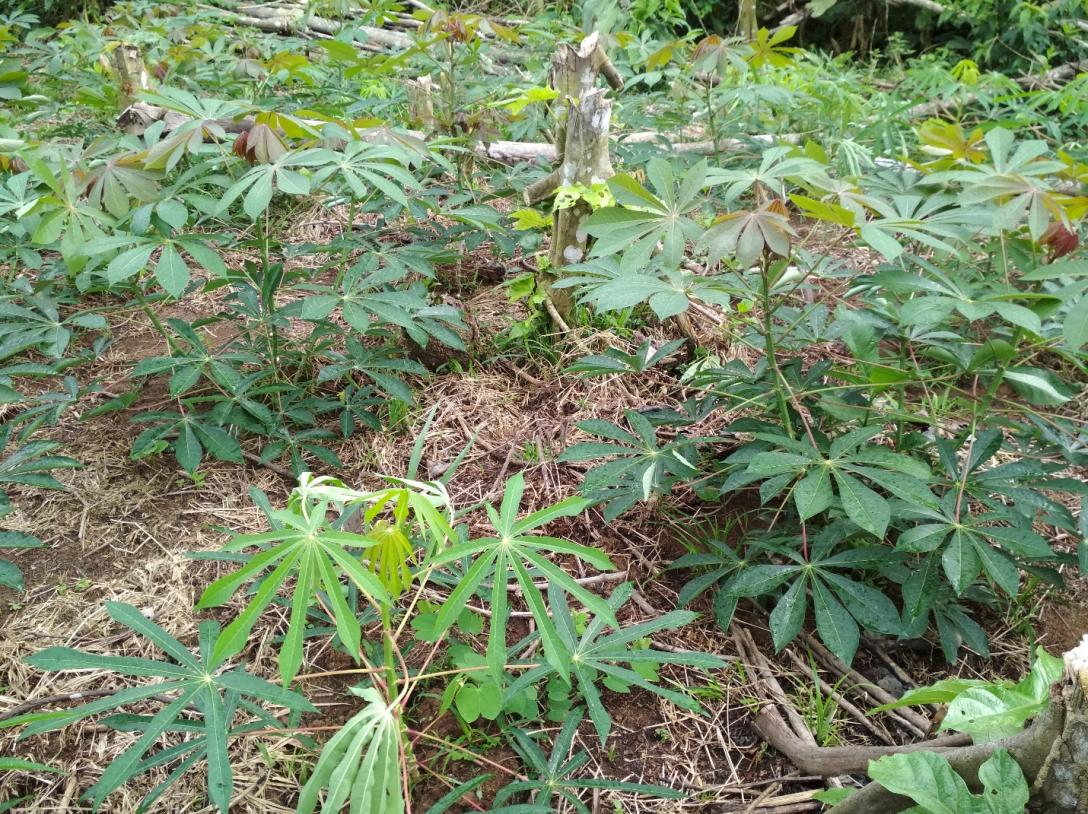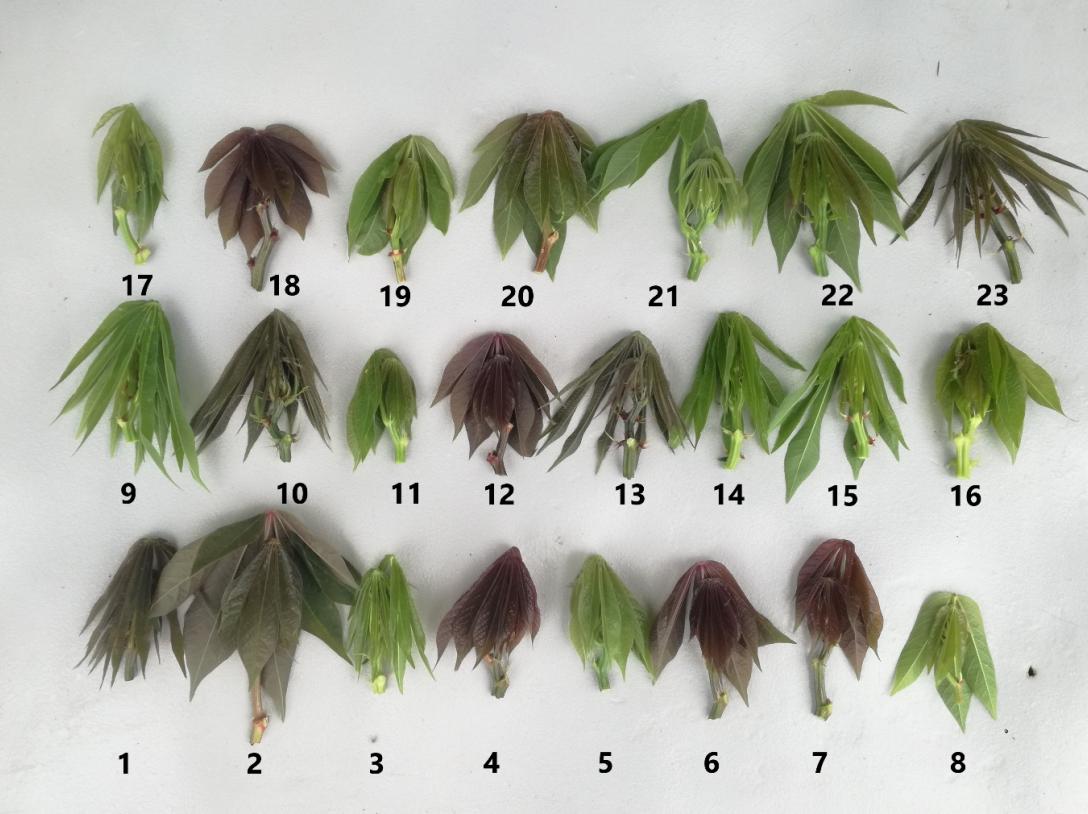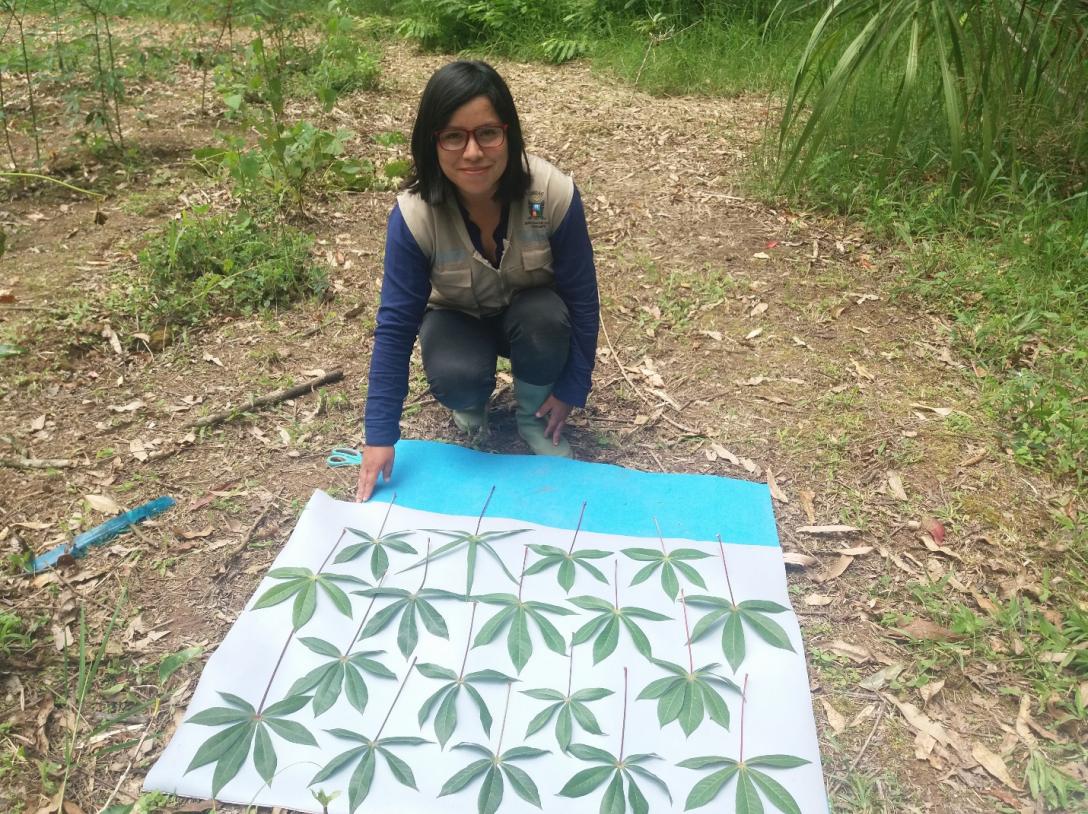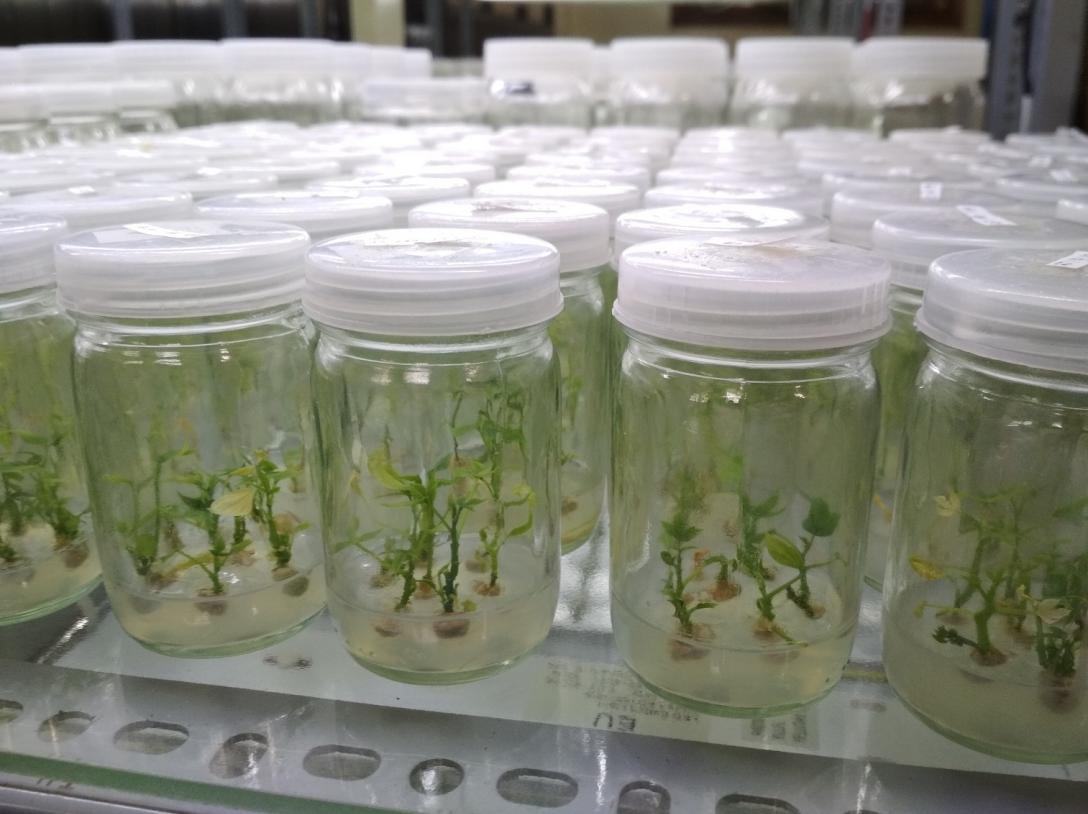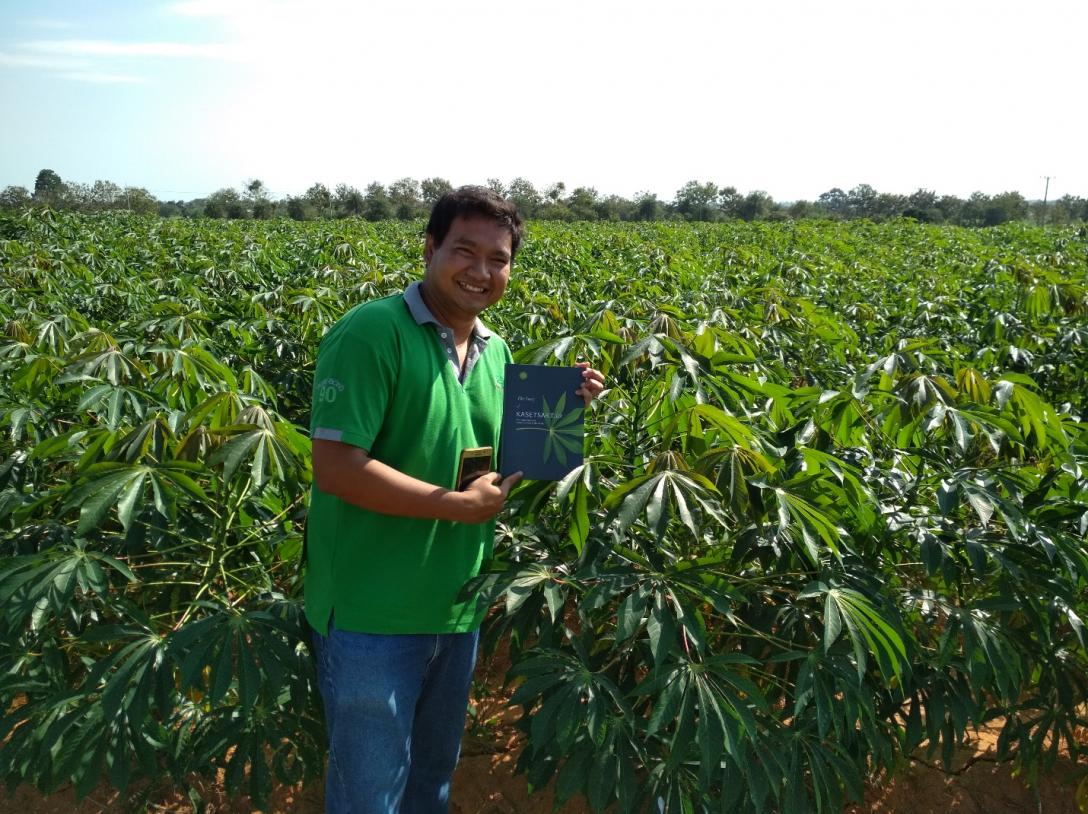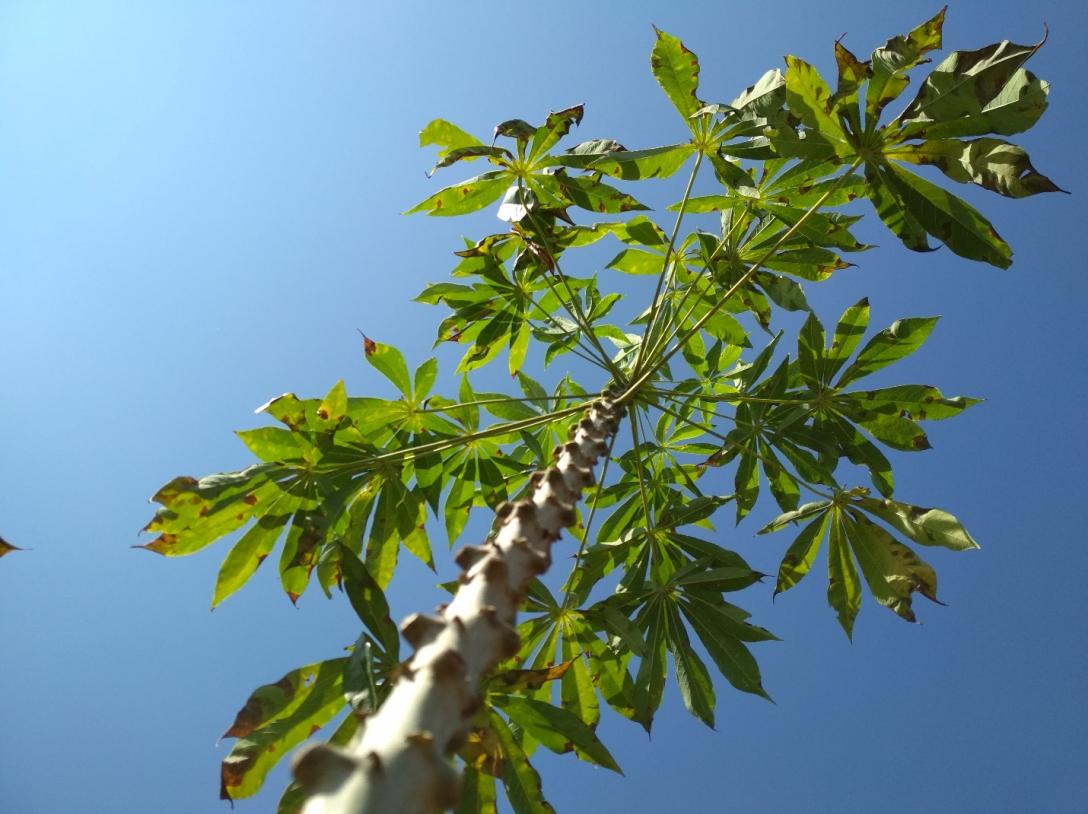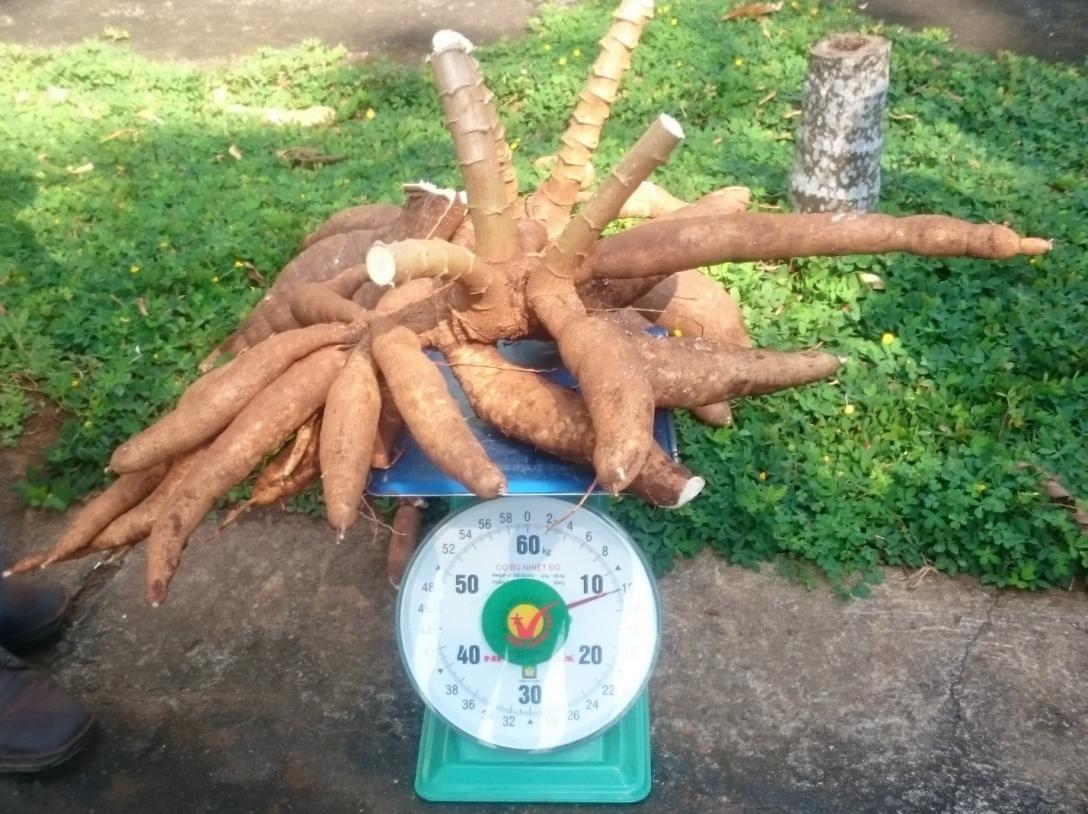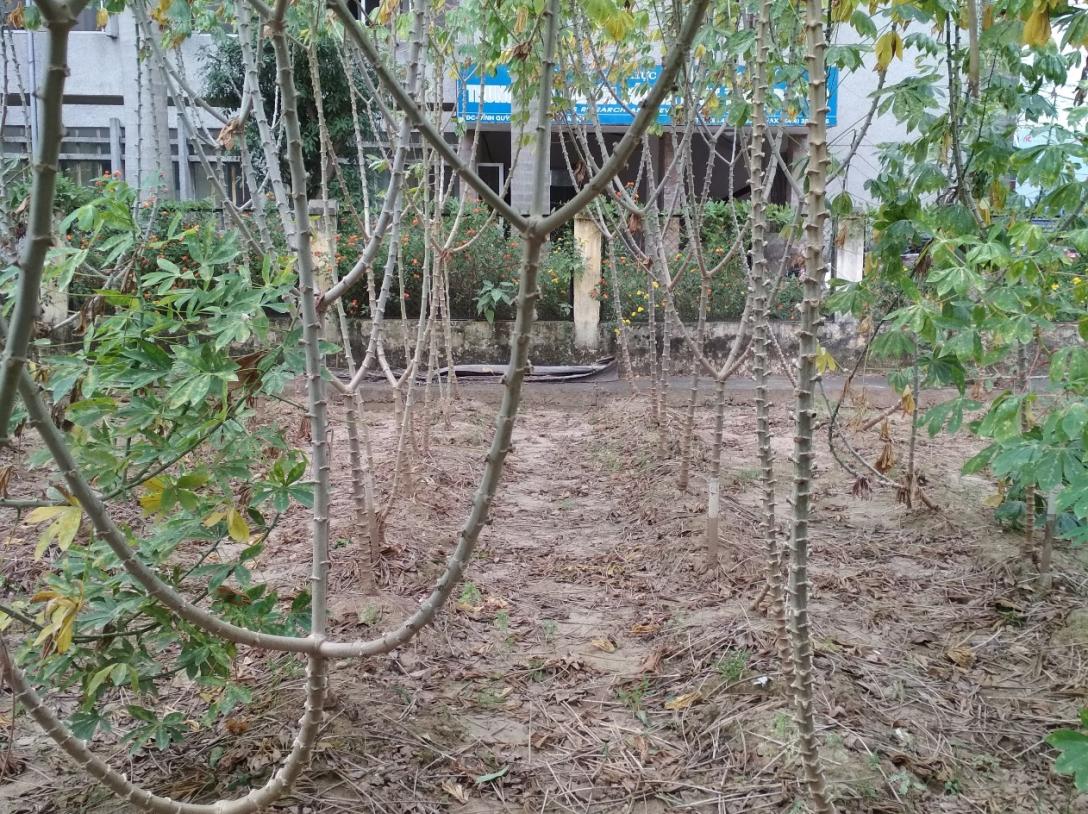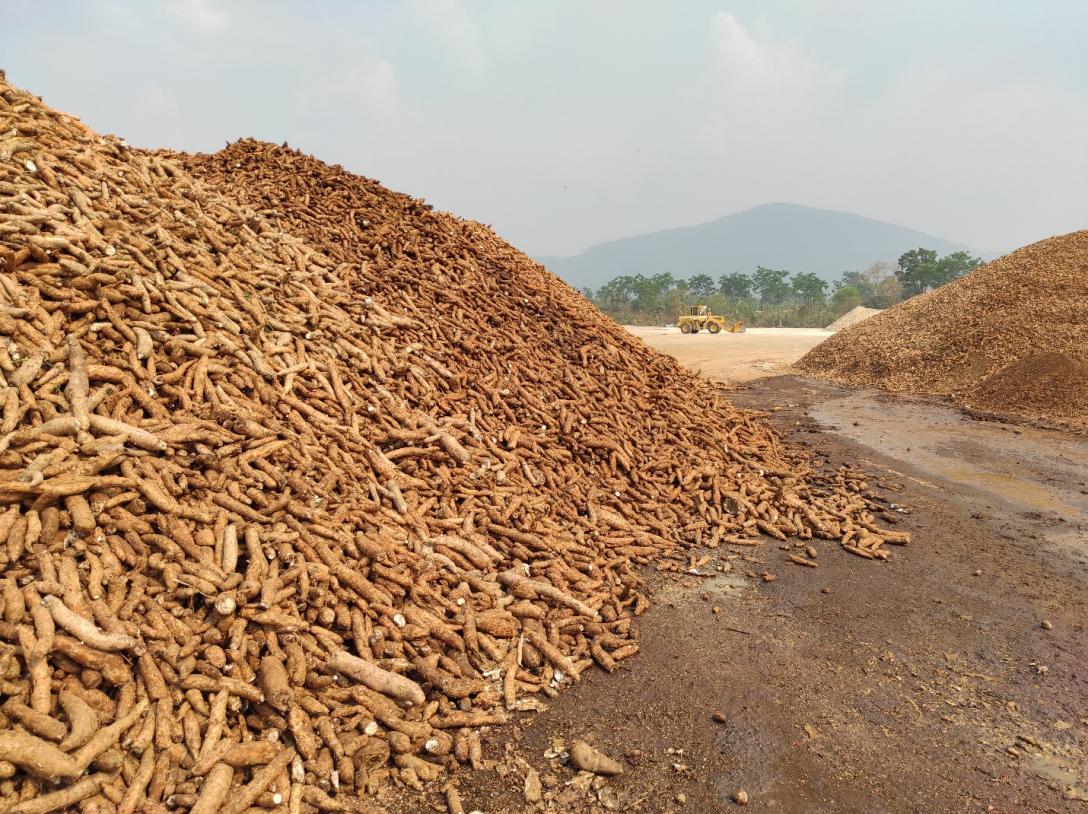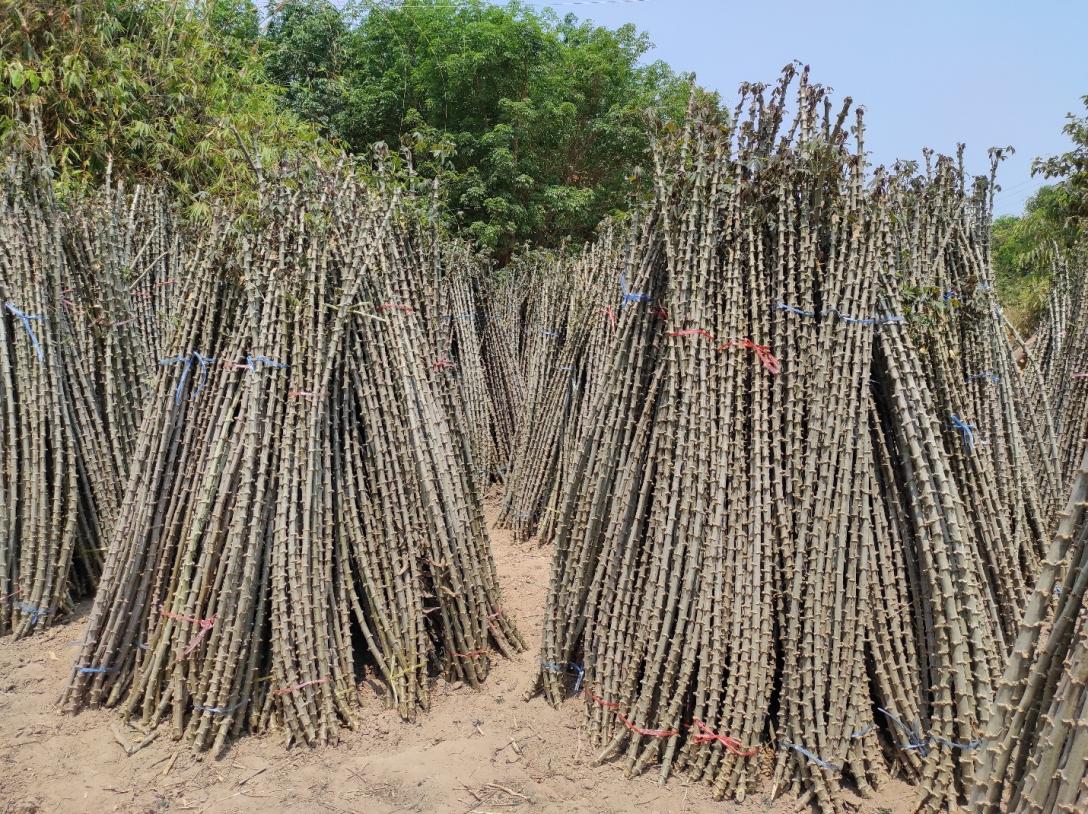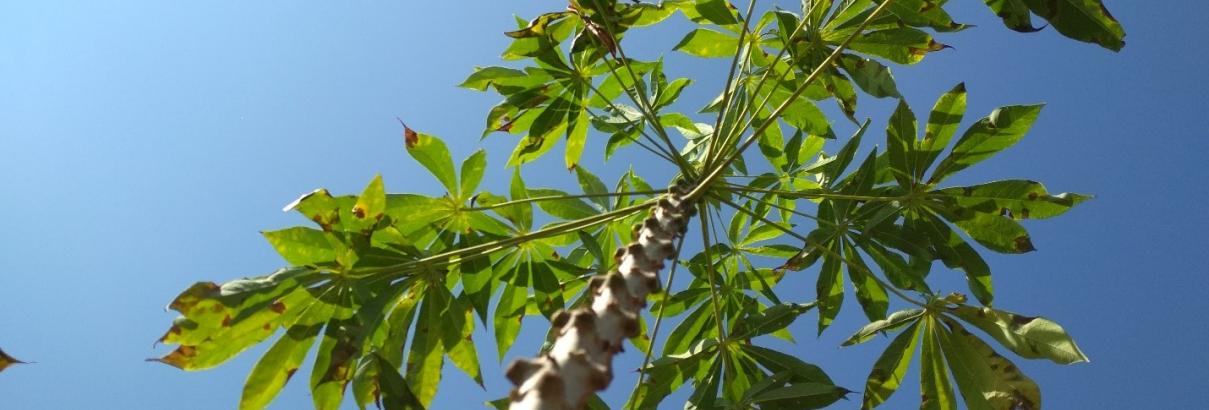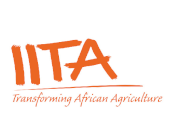Description of the crop
Cassava (Manihot esculenta Crantz) is a root crop native to the Southern Amazon, where it is an important staple and cultural food believed to have been cultivated for 8000-10000 years (Olsen and Schaal, 1999). The plant is grown primarily for its long, starchy roots which are an excellent source of carbohydrates, although the foliage is also edible, protein-rich, and commonly consumed in several regions. The remainder of the plant consists of long, woody stems, which can reach 3m or more in height, supporting an erect canopy of large leaves each with 7-13 lobes. More information on cassava botany and physiology is available here, and the FAO guide to sustainable cassava production is here.
Cassava is typically propagated vegetatively and clonally through the stems, which are collected after harvest, may be stored for several months, and are then cut into 15-30cm cuttings and planted directly to sprout a new crop. Some exchange of true seed occurs, although primarily in the center of origin, and often with more spiritual or cultural meaning rather than as a regular cultivation practice. Cassava management is interesting, since it is a perennial which is usually managed as an annual. This gives the crop extreme flexibility in harvest timing: if a farmer decides they want to postpone harvest, they can simply leave the plant in the ground to keep growing. Partial harvest is also practiced in some subsistence settings, in which a few roots are dug up and harvested and the rest of the plant is left to continue growing, reducing storage needs and spoilage risk.
Importance
Cassava roots are one of the most important sources of dietary calories in the global tropics, and are eaten as a staple food by hundreds of millions of people daily, especially in Sub-Saharan Africa, Latin America, and the South Pacific. Globally production and yields have increased considerably over the last century. However, in the last 50 years Southeast Asia has emerged as the industrial cassava powerhouse, producing 30% of the world’s supply but 95% of internationally traded cassava products (Cramb et al., 2017). In countries like Brazil, Nigeria, and Congo DRC cassava is a daily staple and the backbone of food security for the poor. The flexible harvest timing and relatively low labor and input requirements, combined with a very high tolerance for drought, has also made cassava an important 'survivor’ crop in situations of hardship.
Status of genetic resources
Cassava is a highly genetically diverse crop in its center of origin, the American tropics, where all of the 98+ known Manihot species originate (Nassar et al., 2008). Countries like Colombia exhibit high levels of genetic variation in both cassava and its wild relatives (Tovar et al., 2016), and indigenous groups play important roles in conservation and generation of new cassava diversity in countries like Peru (Salick et al., 1996) and Guyana (Elias et al., 2001).
Gene flow between wild relatives and cultivated cassava varieties is frequent in the Amazon (Allem et al., 2001), but has also been observed in areas of introduction far from the center of origin (Duputié et al., 2007), where studies continue to uncover the varietal diversity maintained and exchanged by farmers (Fu et al., 2014; Ocampo et al., 2021).
Despite our knowledge to date, cassava genetic diversity remains critically underconserved, ranking as one of the species in need of urgent conservation action in a recent global analysis (Castañeda-Álvarez et al., 2016). An estimated 2/3 of cassava diversity is still found only in situ (https://www.genebanks.org/resources/crops/cassava/).
The Alliance of Bioversity International and CIAT maintains the world’s largest and most diverse cassava gene bank in Palmira, Colombia, an ex-situ collection which forms the basis of ABC’s breeding and exchange programs. The collection can be browsed and searched here. EMBRAPA-Brazil is also important, holding about 4,000 accessions. Other important collections are held in CTCRI-India, INIA-Peru, NRCRI-Nigeria, IAN-Paraguay, SRCV-Benin, D.R. Congo and PGRC/CRI-Ghana. A select few (mainly EMBRAPA, Brazil and CIAT) also maintain seed banks to conserve wild species or breeding material.
In addition, ABC has launched a genome hub for cassava, which currently includes access to over 15TB of genomic data accessible here.

